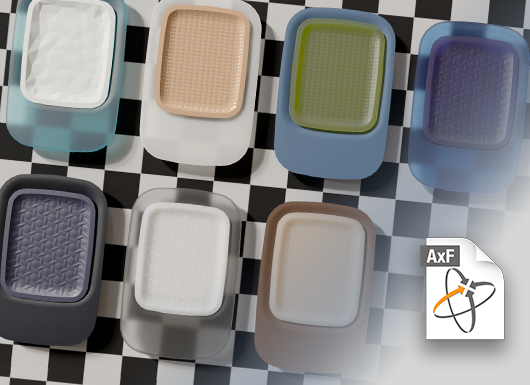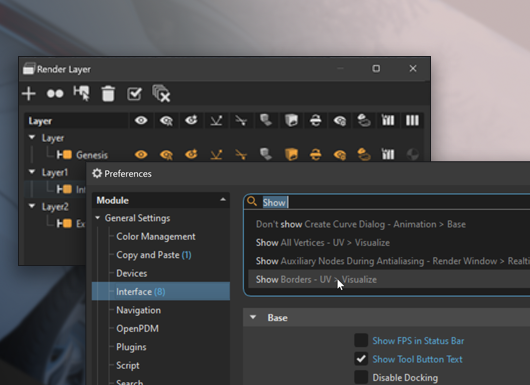VRED 2025
Learn about new features and improvements in this release of VRED. For technical details and bug fixes, see the 2025 release notes and recommended system requirements to ensure Autodesk VRED products are running to their potential.
What's New in 2025.0.1
We added a missing VREDServerNode executable.
What's New in 2025 and General Improvements
For Windows users, 2025 requires an NVIDIA RTX driver v.527.41 or above. To use DLSS RR, you will need the NVIDIA driver v.537.13; otherwise, VRED will default to the DLSS from version 2024.1.
For Linux users, 2025 requires an NVIDIA driver v.525.60 or above. To use DLSS RR, you will need the NVIDIA driver v.535.104; otherwise, VRED will default to the DLSS from version 2024.1.
Due to Linux dependency for Render Node, set your local directory to /var/opt/Autodesk with write access on the Linux machine that is running the VRED 2025 Render Node.
Installation Changes - A bootstrap file can be downloaded from Accounts after a user has made a selection regarding what and how to install, i.e., Download install or Custom install.
Video Captions: With our efforts on the UI Modernisation, we added several new enhancements. At the start of VRED, you will recognize that we did some changes on the onboarding screen. Here you see a list of recently opened files, which you also can change to a tiled view, to get a better and faster visual overview of your files. You also can open our examples files directly from the Onboarding screen now. And we improved the preference menu. As you see, we have rearranged and categorized the entries. And additionally, when you are searching for specific entries in the preferences, and you don’t know anymore where to find them, we’ve added now a search bar where you can have direct access to the entries you need. This shortens up the time searching for entries massively and makes you faster.
We also improved the UI on some modules like the UV Editor, where you can now scale the windows more dynamically. Also, the Render Layer dialog is now better scalable and changes to icons, instead of text-only when scaled down. This is much better when this window needs to fit into a smaller area for example.
Additionally, we implemented a single line edit on some modules, so you can just click into the name filed once to change the naming. Which makes it much faster. And we did some more user interface changes on the Stream App and implemented the possibility to activate Nvidia's Deep Learning Super Sampling from there. Additionally, we added different view modes, which gives you more flexibility to adjust the user interface to your needs or to your device you are using.
With our efforts to increase your productivity and visual quality, we implemented a new color space called AgX. You can access it in the Camera Editor.
While sRGB gives out the colors correctly, but is not very dynamic, and ACES looks more dynamic, but has a hue shift in some areas, like you can see here in this scene in the red and blue area, AgX has a much better dynamic color representation and gives out the colors correctly. You can also clearly see the differences in this scene here, as well. So, AgX gives you a more consistent look of the colors and, therefore, also more control of your end result.
And also, our brand-new volume render capability from the last version, has been improved in a performance increase of 15 to 30 percent in OpenGL. Plus, you can now control the falloff a Scatter volume and fade it in different directions.
Also new in VRED 2025 is the support of translucent AxF XRite materials. These measured materials will give you the opportunity to correctly visualize all sorts of translucent plastics. And additionally, we also implemented a new Surface Roughness to our Subsurface Scattering. This is very helpful when rendering translucent plastic with a rough surface instead of a glossy one. And we have many examples in industrial design and also in automotive design, translucent materials are very often used, like here in the front lights, for example and for interior parts.
We added a new web shop from Ultraspheres, so you can access the Ultraspheres HDRI images and backplates directly from the user interface. That means that downloaded content will appear in your scene when the download is finished.
Additionally, we added new free environment assets from Ultraspheres, which you can access directly from our VRED library. Just download them from there, unpack them, add the path in the preferences in order to see them directly within the Asset Manager, and use them instantly in your scene.
And last, but not least, I’m happy to announce that we implemented the ability to import and export USD files. This gives you a ton of more options and possibilities within your pipeline and also when working with different platforms and teams. So, you can exchange data with different applications, like Maya and many more. For more information about the USD format options, please visit our documentation.
Thanks for watching the video!
Click the cards below for further information on new features and improvements found in 2025.





